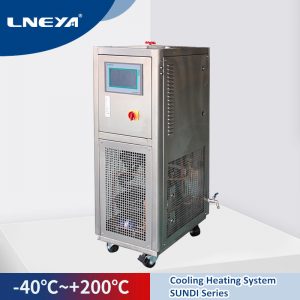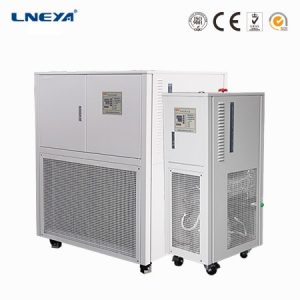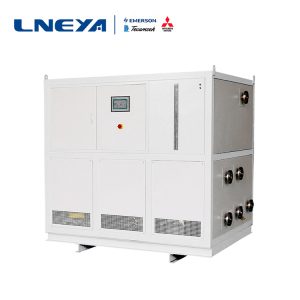Temperature control system for controlling integrated circuit chip test temperature
Advances in semiconductor technology have led to the development of next-generation electronic devices such as integrated circuits, which have more and more active components, higher circuit complexity, smaller area, and tighter wiring. These attributes generate more heat in the electronic device and provide fewer opportunities for heat dissipation. This results in higher operating temperatures and therefore reduces reliability, especially for integrated circuits operating at high frequencies and high thermal loads. The small size of integrated circuits and tightly packed circuits of surrounding equipment make it more difficult to cool integrated circuits using conventional fans or heat sinks. In addition, integrated circuits may experience large temperature fluctuations that affect their performance attributes, such as the timing of mathematical operations, data transfers, and read / write operations, especially at high frequencies. Temperature changes as low as ± 5 ° C can cause changes in operating frequency up to 20 MHZ, which can severely affect chip performance.
Prior art methods for controlling the temperature of integrated circuits use a combination of a heat sink attached to the integrated circuit and a cooling fan that directs airflow through the heat sink. However, it is difficult to remove a large amount of heat by these methods. First, the thermal mass of the heat sink increases the time it takes for the integrated circuit to reach the required temperature. Second, once the integrated circuit has risen to the required temperature, the relatively low specific heat capacity of the air limits the ability of the integrated circuit. The cooling system removes excess heat at a sufficiently high rate. For these temperature control systems, it is particularly difficult to quickly respond to large temperature changes that may occur in high-performance chips.
The bulky heat sink and cooling fan during the test of the integrated circuit chip can interfere with the operation of the robot processor used. The robot handler has an articulated arm with a vacuum port for picking up integrated circuit chips from a rack and fixing them in a test socket. When powering the integrated circuit, various read / write operations are performed on the integrated circuit. Typically, one or more radiators and cooling fans are connected to the arm of the robot, which makes the arm bulky and hinders its ability to pick up a single integrated circuit and place it accurately in a test socket. Therefore, it is desirable to have a temperature control system that is compact, lightweight, and can be easily retrofitted to existing test systems.
Therefore, there is a need for a temperature control system capable of maintaining electronic equipment at a predetermined temperature. It is also desirable for temperature control systems to rapidly raise and lower the temperature of electronic devices. It is further desired that the temperature control system be compact, lightweight, and suitable for use with existing automatic testers.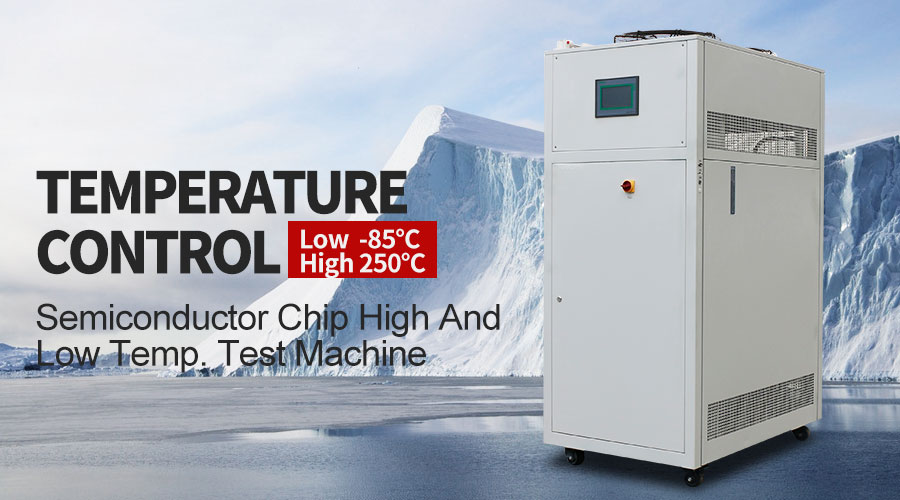
Lneya actively explores and researches the component test system, which is mainly used for temperature test control in integrated circuit chip testing. It has wide temperature orientation and high temperature rise and fall. The temperature range is -92 ° C ~ 250 ° C. This product is used in harsh environments. In the manufacture of semiconductor electronic components, the assembly of IC packages, as well as engineering and production testing phases include electronic thermal testing and other environmental test simulations at temperatures (-45 ° C to + 250 ° C). During the test, the excellent temperature is completed. Once the integrated circuit chip is put into actual use, it can be exposed to extreme environmental conditions to meet stringent military and telecommunication reliability standards.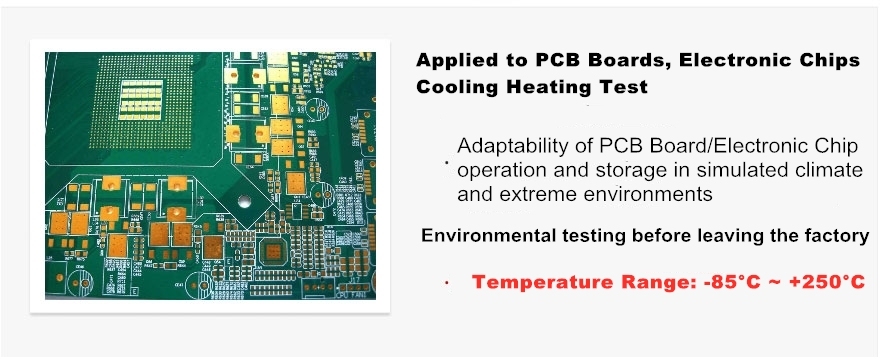
Recomendaciones relacionadas
-
Método de desconexión en caso de fallo del circulador de alta precisión y alta y baja temperatura
1078The high-precision high-low temperature circulator is one of the equipments used in the pharmaceutical and chemical industry to support various reactors. If users encounter an abnormal power outage during use, they should pay attention to operatio...
Ver detalles -
Professional introduction and application of cooling circulating water machine
1042The cooling water machine (the chiller, also known as the chiller) is an air-cooled water circulation device that does not require a cold water tower. It is a compressor-cooled design that is designed for machines, scientific instruments, or produ...
Ver detalles -
Heat transfer oil chemical temperature control system product application
857The heat transfer oil heating and cooling temperature control system is a device with heating or lowering at the same time, that is, when the temperature of the equipped glass reactor, rotary evaporator, extraction equipment and other devices need...
Ver detalles -
¿Cómo se instalan los equipos de los fabricantes de unidades criogénicas a -50 °C?
1060-50 °C cryogenic units are used in the refrigeration and chemical industry, so what issues should be paid attention to during installation? LNEYA professional manufacturers tell you that you should install according to the instruction manual. For...
Ver detalles
 LNEYA Enfriadoras industriales Fabricante Proveedor
LNEYA Enfriadoras industriales Fabricante Proveedor









